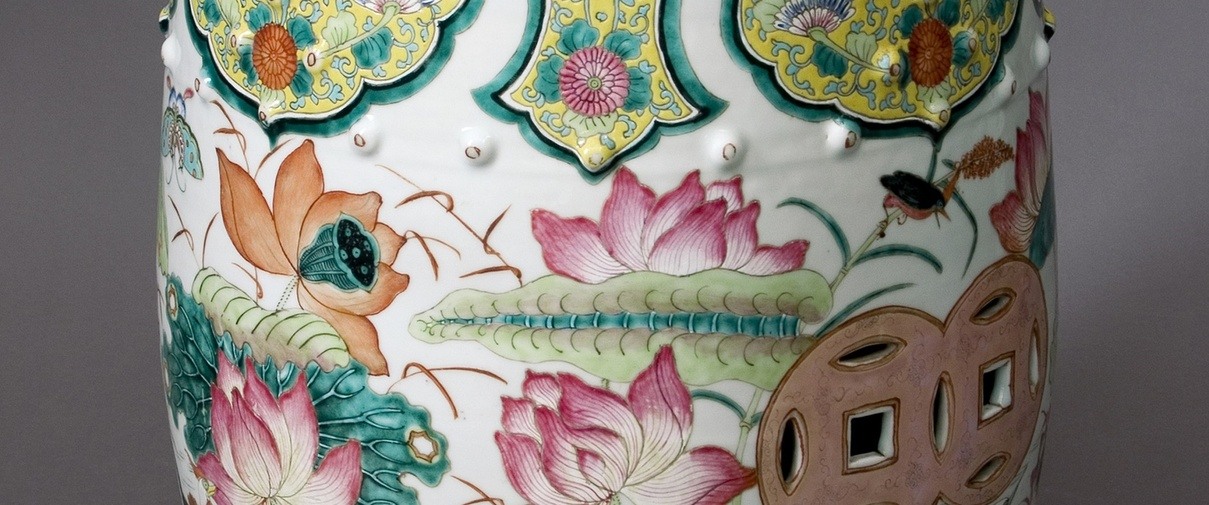Garden stool
Elegantly sitting on wealth
In earlier times, the Chinese elite liked to hold elegant tea parties in the garden. Of course, comfort was important. In order to be able to rest for a while after a walk through the garden, beautifully made garden chairs made of porcelain were used. These cool garden chairs were especially popular in the hot summer season.
Especially in the south of China, social gatherings often took place outdoors, such as tea or wine parties, playing weiqi (a type of chess), making music, painting or doing calligraphy. When it was necessary to impress friends, colleagues or business associates, such a gathering was held in a beautifully designed garden. Gardens were therefore a status symbol in China and differed greatly from ours: no colourful flower beds, but old, elegant trees such as pine and prunus, and bamboo. The design of such a garden follows the natural slope of the landscape and has an asymmetrical layout, with irregularly shaped rocks and various ponds. There were even competitions to choose the most beautiful garden. And of course, one had to impress guests with special garden furniture, such as this porcelain stool.
The stool is hollow and painted in famille rose enamels, which means that the enamel colour gives the painting a predominantly pinkish red colour. Unlike the green of famille verte, which has a Chinese history, the red of famille rose has a European origin. It was probably the Leiden scientist Cassius who invented pink enamel in the middle of the seventeenth century. This discovery reached China around 1720. Because of its foreign origin, it was therefore called yang cai in China, which means 'strange colours'.
Another example is the mill cup, usually made entirely of silver. This cup consists of a chalice on one side and a mill with sails on the other side. As soon as the cup is filled, you blow the mill sails into motion. Before they stop, the glass must be empty. If that does not work, a new round follows.
